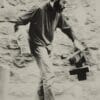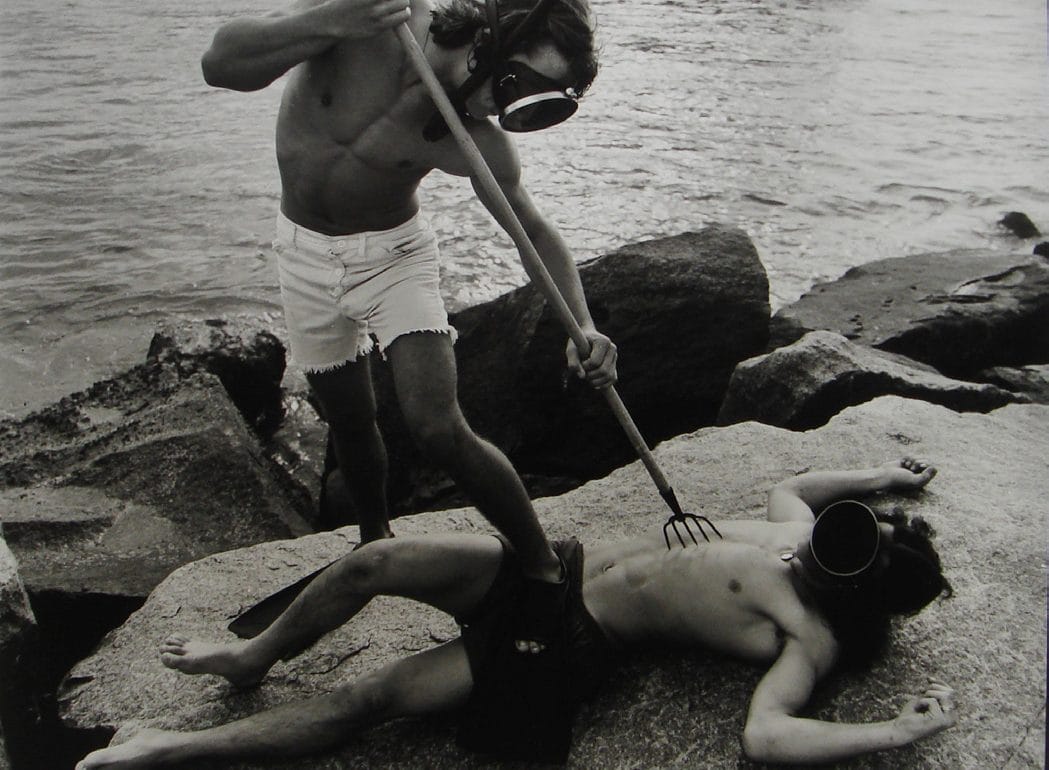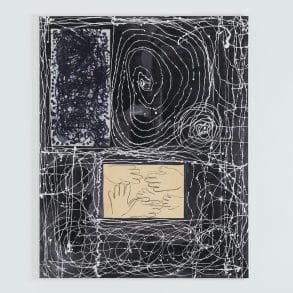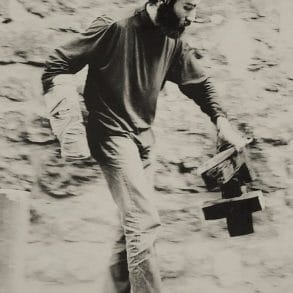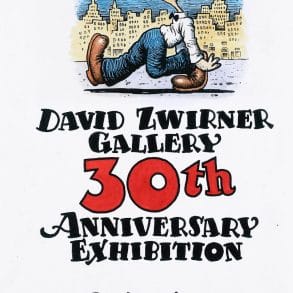Arthur Tress was born in Brooklyn in 1940. As a child, he used to frequent the Coney Island peninsula, a realm of entertainment where people came to seek a chimerical pleasure in the aftermath of the war, where distraction revealed itself in its disruptive force, as a state of temporary madness during which people could escape from their lives, their religious communities, and their obligations.
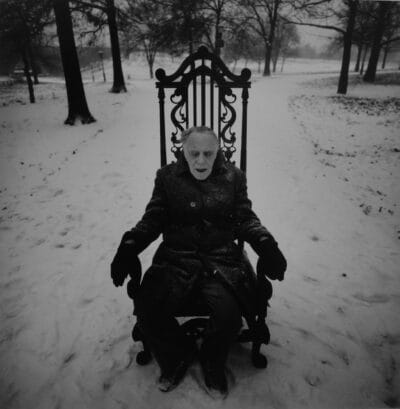
©Arthur Tress, courtesy Galerie Esther Woerdehoff
It was in this theatre of the strange – a place where hierarchies and values were temporarily overturned – that the young Arthur Tress forged his photographic eye. We can imagine him contemplating the grey, barely iodised water, and sitting down on the hard sand, compacted by the trampling of visitors, to observe the spectacle unfolding before him. A child who was already different, with a heightened awareness of the flaws in the world around him, and for whom the flickering mechanics of the attractions were the colour of the human soul.
If the places of his American childhood, where adults indulged in childish games as a joyful outlet, acted as a catalyst, the world of children itself occupies a predominant place in Arthur Tress’s work.
The photographer does not subscribe to the idea of childhood as a lost paradise, and his images of children are intranquil and filled with a disquieting melancholy. The face of childhood is that of a boy crawling on the ground with roots for hands, a being of indeterminate gender who stares at us while smoking a cigarette while his classmates play, or a schoolboy asphyxiated under his dunce cap in a deserted school classroom.
These photographs capture the subversive power of the imagination of childhood games, at a time in life when people invent a world for themselves that suits their desires. Arthur Tress takes an accurate look at this period, when spontaneity and the joy of discovery coexist within the same person on the one hand, and incommunicability and fear of the unknown on the other.
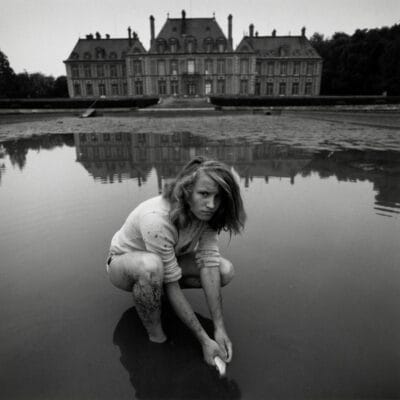
©Arthur Tress, courtesy Galerie Esther Woerdehoff
Arthur Tress speaks from the margins. His photographs reveal the violence of conforming to society’s expectations, which is exerted on those who stray from them. The questioning of masculinity and femininity, the injunction to marry, and physical infirmity are all factors that animate the characters who inhabit his images.
The world of Arthur Tress evolves on the edge of dream and reality, in a stubborn quest to grasp this boundary. The artist’s photographs are never in full light, but always in half-light. They do not show us a scene but suggest a faded memory.
Arthur Tress unearths images buried in our subconscious to create a corrosive mythology.
These works reveal an inner truth that remains in the memory.
Once seen, these images become part of our visual repertoire because they reveal something about us. In order to examine the world, Arthur Tress uses props to stage the vision in his head and capture his image. He disguises reality to give it the appearance of his dream.
Arthur Tress’s work takes us into an in-between world where death is omnipresent.
There is an urgency to capturing people who stand on this boundary, as on the occasion when he shot his father in the snow in New York, to capture one last snapshot of him, a few days before his death. The old man appeared with his mouth open, as if caught in a final rattle, confronting us with the tragic immobility of his body.
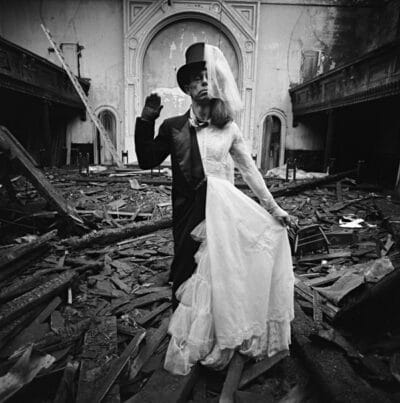
©Arthur Tress, courtesy Galerie Esther Woerdehoff
The works of Arthur Tress are improbable visions with the appearance of mirages. They give the impression of having surprised a truth about these beings that we shouldn’t have seen, like the young girl in front of the Château de Breteuil who is rescuing fish before a pond dries up. Kneeling in the mud with an anxious expression on her face, she seems to be saying “What are you looking at ?”.
This is the first solo exhibition devoted to Arthur Tress by the Esther Woerdehoff gallery since 1998.
A single work by Arthur Tress was included in the gallery’s very first exhibition, Une exposition pour enfants, which showed works by icons of photography hung at children’s level.
I chose the image of the owl, which was part of my collection. A year later, a monographic exhibition was devoted to the work of Arthur Tress.
I invited him to spend ten days in Paris, as he lives in San Francisco. He lived under our roof, with my family. He got up early in the morning to prowl the streets and find his subjects. When we prepared breakfast for our daughter, he came home with a mischievous smile on his face, happy with his morning walks.
For his first solo exhibition at the gallery, we had twenty-five photographs by Arthur Tress on the walls, and his friend, the writer Michel Tournier, honoured us with several visits.
At the time, I had started the project of having myself photographed by the artists in the gallery. So I asked Arthur to take my portrait during his stay. Days went by without him moving and I had to remind him several times, until I resigned myself. I realised that he didn’t want to.
An hour before he left to catch his plane, he came looking for me. My husband told him I was at the hairdresser. What a surprise to see Arthur enter the little salon where I was sitting, bits of aluminium in my hair, under a huge bell like a lamp post, with my apron up to my chin! The hairdresser was amazed because Arthur had moved some furniture around to take his photo.
Later he sent me the photo. Needless to say, I didn’t like myself at all in that photo. I looked like something between a witch and an alien.
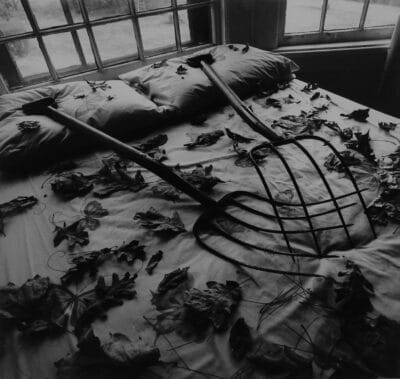
Still Lives series, gelatin silver print Edition of 50, 36 x 28 cm
©Arthur Tress, courtesy Galerie Esther Woerdehoff
Arthur Tress’s dreams have never left me. The book he wrote with Michel Tournier reads like a psychology of humanity.
Making Leaves, Cold Spring, New York, 1978 : you’ll find it all. His relationship to sexuality, to men, to the couple. Two forks with long, sharp teeth kiss on a marriage bed covered in dead leaves.
Bride and Groom, 1971 : long before Photoshop, this photograph is a composition of a figure that gives the illusion of a newly-wed couple standing inside a destroyed church.
I share a fascination for the acid humour of Arthur Tress with the great Parisian collector Jérôme Prochiantz.
Spontaneously, he offered to merge part of our collections for this exhibition. I’m touched by this generous gesture and grateful for it.
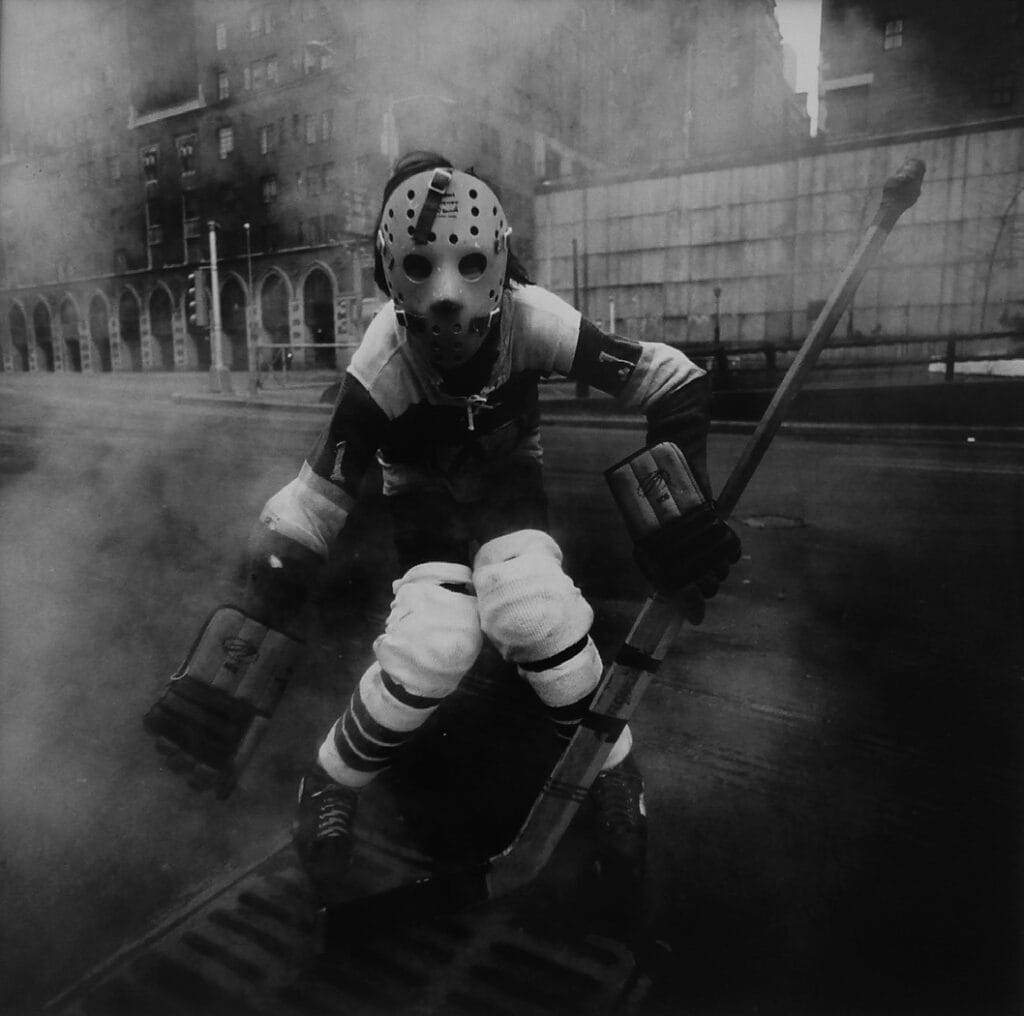
Child’s Play series, gelatin silver print Edition of 50, 36 x 28 cm
©Arthur Tress, courtesy Galerie Esther Woerdehoff
Galerie Esther Woerdehoff
36 Rue Falguière, 75015 Paris, France

